NIL
Hagens Berman, Law Firm Behind Massive NCAA NIL Litigation, Says Talk of Executive Order and Saban’s Interfering are Unmerited
Hagens Berman, Law Firm Behind Massive NCAA NIL Litigation, Says Talk of Executive Order and Saban’s Interfering are Unmerited Law firm co-leading historic NIL litigation spotlights the best aspects of incoming changes amid Coach Saban’s “unneeded self-involvement” Attorneys at Hagens Berman representing a class of hundreds of thousands of current and former college athletes in […]
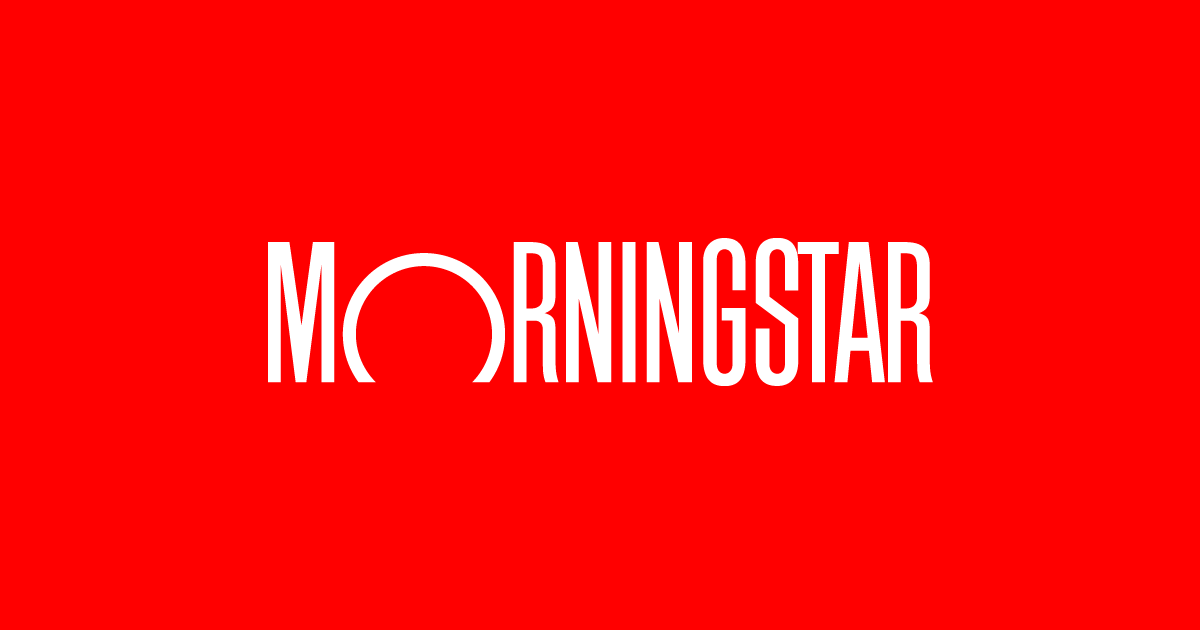
Hagens Berman, Law Firm Behind Massive NCAA NIL Litigation, Says Talk of Executive Order and Saban’s Interfering are Unmerited
Law firm co-leading historic NIL litigation spotlights the best aspects of incoming changes amid Coach Saban’s “unneeded self-involvement”
Attorneys at Hagens Berman representing a class of hundreds of thousands of current and former college athletes in a pending historic $2.78 billion settlement with the NCAA — including a revenue sharing provision worth at least $20 billion — say talk of an executive order and eleventh-hour self-importance from University of Alabama’s ex-football coach, Nick Saban, is unmerited and unhelpful.
“While he was a coach, Saban initially opposed NIL payments to athletes, pushing to add restrictions and red-tape through national legislation to add ‘some sort of control.’ During his time scrutinizing the athlete pay structure, he made tens of millions of dollars and was previously the highest-paid coach in college football,” said firm managing partner and co-founder, Steve Berman, who serves as court-appointed co-lead counsel in the litigation, of the settlement slated to become one of the largest antitrust class-action settlements in history.
“Coach Saban and Trump’s eleventh-hour talks of executive orders and other meddling are just more unneeded self-involvement,” Berman said. “College athletes are spearheading historic changes and benefitting massively from NIL deals. They don’t need this unmerited interference from a coach only seeking to protect the system that made him tens of millions.”
The antitrust class-action lawsuit against the NCAA will bring historic changes to college sports and will allow college athletes to be fairly compensated for the use of their name, image and likeness (NIL) in what has become a multibillion-dollar industry. The firm’s attorneys have fought in the area of sports litigation for two decades.
How Have Changes to NIL Rights Benefitted NCAA Athletes Without Any Executive Order?
- Allowing payments to college athletes improves the overall fairness of college sports, from schools to coaches to players. College sports is a multibillion-dollar entertainment industry that generates over $19 billion per year. For decades, college sports have existed upon the mantle of athletes performing solely “for the love of the game” while coaches were often their state’s highest earning public employee on the payroll. For example, while University of Alabama’s ex-coach Saban touts his opinion on limiting athletes in this new landscape, he will receive a $500,000 salary in his new advisory role with the university, a hypocritical standpoint to say the least.
- NCAA athletes are empowered to earn their own income. The total value of new payments and benefits to college athletes is expected to exceed $20 billion over the next 10 years, and college athletes who were once left with no compensation for their hard work, entertainment value and tireless physical efforts are now given a fair place at the table in the realm of college sports. NIL payments inherently allow athletes to operate more independently and make choices based on the accurate value of their capabilities. Historically, college sports have included many Black and low-income athletes, who now stand to receive the full benefits of their value.
- NIL deals allow college athletes to explore a new realm of business, learning about business management and branding. NCAA athletes now have the opportunity to engage in a lucrative area of endorsements, product placements, social media deals and other business ventures, giving them a first-hand education in business management and sports business, a growing market with tangible value. College athletes may also hire professionals to assist in the areas of tax law, legal issues or marketing.
- NCAA sports is a hugely lucrative space, allowing college athletes massive rewards. Individual athletes have secured NIL deals in the millions and numerous college athletes have taken advantage of the opportunity to secure major deals. College athletes receive the ability to invest in themselves, their careers and their futures.
- Statistically, sports media outlets have reported that with the induction of NIL deals, more athletes seem to be opting to stay in school. Prior to NIL deals, a college athlete had few benefits to remaining in school, especially if faced with an injury. Taking their skills into professional athletics in the future is already a slim chance. With the inclusion of name, image and likeness payments, NCAA athletes have another benefit to staying the course and completing college, which will benefit them in myriad ways. Athletes are also incentivized to do well academically by this same mindset.
The settlement process is being thoroughly reviewed by Judge Claudia A. Wilken of the U.S. District Court for the Northern District of California who in the April settlement fairness hearing requested further attention to details concerning roster limits and other aspects of the settlement.
The preliminarily approved settlement resolves three pending antitrust lawsuits, House v. NCAA, Hubbard v. NCAA, and Carter v. NCAA. As part of the settlement, the NCAA and its conferences will pay more than $2.78 billion in damages to college athletes over a 10-year period, eliminate rules prohibiting schools from making direct payments to athletes, and dramatically expand the availability of compensation and benefits available to athletes. This includes eliminating restrictions on the number of available athletic scholarships across all Division I sports.
Class members in the three affected cases may find out more about the claim process by visiting the settlement website at collegeathletecompensation.com. Find out more about the class-action lawsuit against the NCAA and its member conferences.
About Hagens Berman
Hagens Berman is a global plaintiffs’ rights complex litigation law firm with a tenacious drive for achieving real results for those harmed by corporate negligence and fraud. Since its founding in 1993, the firm’s determination has earned it numerous national accolades, awards and titles of “Most Feared Plaintiff’s Firm,” MVPs and Trailblazers of class-action law. More about the law firm and its successes can be found at www.hbsslaw.com. Follow the firm for updates and news at @ClassActionLaw.
Media Contact
Ash Klann
pr@hbsslaw.com
206-268-9363
View source version on businesswire.com: https://www.businesswire.com/news/home/20250505781601/en/
NIL
Focus on NiJaree Canady’s NIL deal ‘insulting’ to Texas Tech softball star
Why Texas Tech, Texas will win 2025 WCWS It’s a Lone Star State Women’s College World Series this year, and reporter Jenni Carlson breaks down one reason Texas Tech will win and one reason Texas will win the WCWS. Glasco argued that the focus on Canady’s compensation overshadows her athletic achievements and perpetuates gender inequality […]

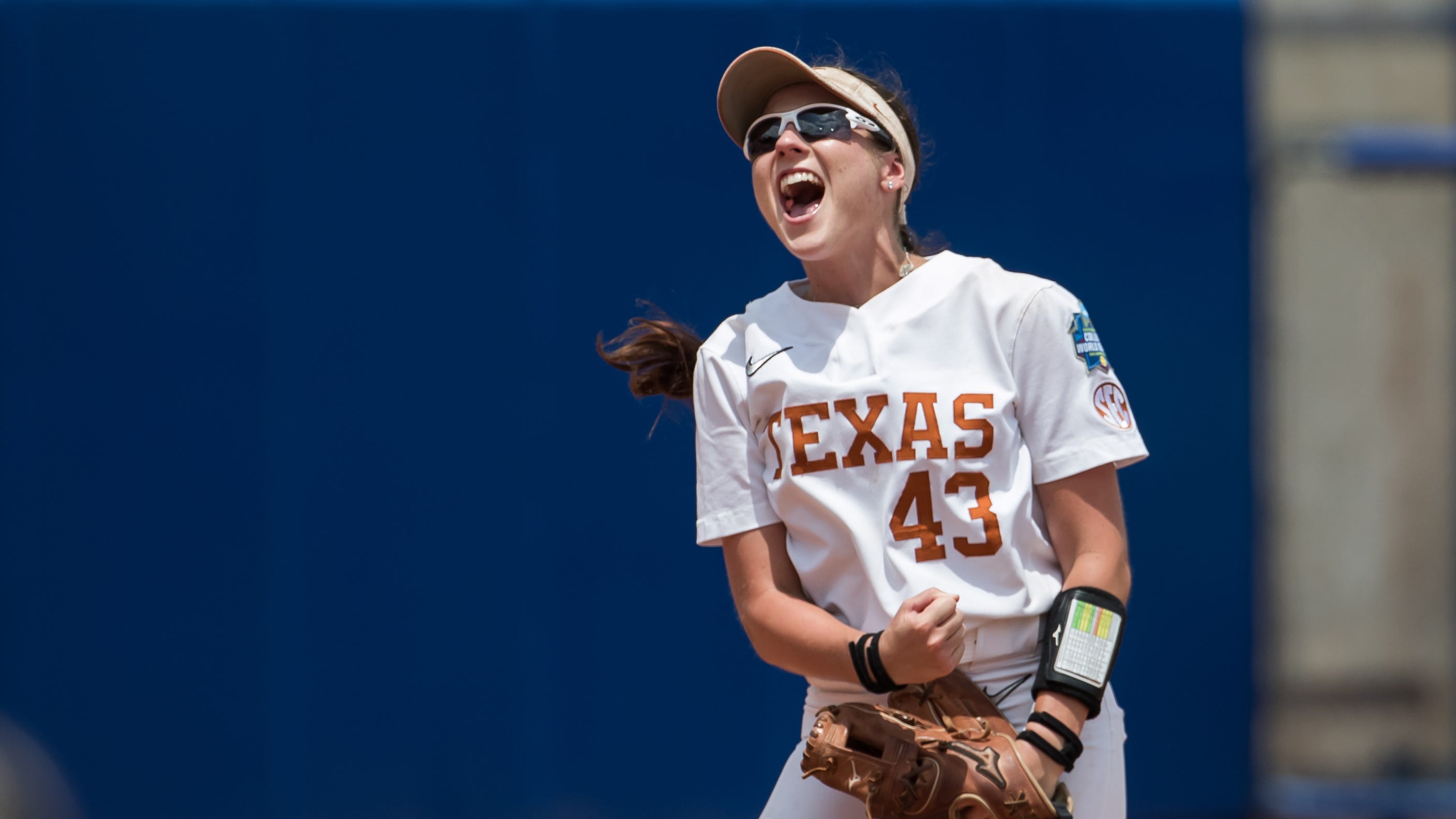
Why Texas Tech, Texas will win 2025 WCWS
It’s a Lone Star State Women’s College World Series this year, and reporter Jenni Carlson breaks down one reason Texas Tech will win and one reason Texas will win the WCWS.
- Glasco argued that the focus on Canady’s compensation overshadows her athletic achievements and perpetuates gender inequality in sports.
- He emphasized the significant value Canady brought to the team, exceeding the financial investment of her NIL deal.
- Glasco advocated for clearer rules and guidelines surrounding NIL deals in the future.
OKLAHOMA CITY — Even after the Texas Tech softball team’s season came to a bitter end in the finals of the Women’s College World Series, Gerry Glasco had to be asked about NiJaree Canady’s name, image and likeness deal.
Since Canady’s arrival last July, she and her head coach have fielded question after question about the nature of the agreement with The Matador Club — most from national outlets who dropped in on the Red Raiders throughout the season — what it means for Canady, the player, and Glasco, the leader of the Red Raiders. By the end of Friday night’s press conference following the 10-4 loss to Texas in a winner-take-all game for the national championship, Glasco had had enough.
Glasco gave it a second before answering the question from a national outlet’s reporter. He began by saying he was in no way, shape or form the right person to be talking about NIL. He did, however, have a few thoughts on the focus — even 11 months after it became public knowledge — on Canady’s deal.
“Why is it different for a female athlete to be paid $1 million than a male football player getting three million or four million, or a male basketball player?” Glasco rhetorically asked. “I think that’s an interesting question.”
Glasco took Canady’s situation and compared it to that of the Ohio State football team, which was known to have paid a hefty amount for it’s national championship-winning team. While NIL might be mentioned in discussions about the Buckeyes, it rarely appears on TV broadcasts, he said.
Canady and the Red Raiders were not afforded that luxury. Each time Texas Tech made it onto ESPN, the bulk of the talking points — after Canady’s talent — were those about the NIL deal that brought her to Lubbock.
“Personally, I’m thrilled for NiJa,” Glasco said, adding that he loves the idea of any athlete being able to capitalize on themselves, leaving school without years of student loans to pay off. “I found it almost insulting to her at times when I listen to broadcasts, how much they talk about it.
“Like I said, I don’t hear it when we talk about… when we watch a men’s basketball game or a men’s football game. And to me, that’s not right. That shouldn’t be that way.”
The Texas Tech head coach pointed out something he reiterated before the WCWS began: Canady’s deal may be big and historic, but the return on investment might be the highest in the short history of NIL.
“The value of NiJa Canady to our program is, I think, it’s unbelievable,” Glasco said. “I’m no expert, or somebody could do an in-depth study, but I have no doubt it would exceed a million dollars of value.”
The Matador Club seems to agree with Glasco. The Tech NIL collective signed Canady to another lucrative deal that was reported Friday before the championship game.
Glasco sees this is an opportunity for everybody to learn and grow from.
“I think that our sport, I’m thrilled for the athletes that are getting to take advantage,” Glasco said. “I also think that we have to use great caution. It’s a new policy. It’s a new. … I don’t know what the right word (is), but it’s a new situation and obviously a lot of rules and guidelines need to be used or set, established in the coming years.”
NIL
Texas Tech’s first Women’s College World Series appearance fueled by NIL and the transfer portal
OKLAHOMA CITY — After pitching only one inning in the biggest game in Texas Tech softball history, pitcher NiJaree Canady watched the remainder of the game from the dugout. Canady, who started every game of the Women’s College World Series for the Red Raiders finally hit her wall. “I think the amount of innings got […]

OKLAHOMA CITY — After pitching only one inning in the biggest game in Texas Tech softball history, pitcher NiJaree Canady watched the remainder of the game from the dugout. Canady, who started every game of the Women’s College World Series for the Red Raiders finally hit her wall.
“I think the amount of innings got to her,” Texas Tech coach Gerry Glasco told the media postgame. The former Louisiana Tech head coach put his ace in the circle for 240 of the Red Raiders’ 410 innings pitched.
Any why wouldn’t he?
Canady completed her junior campaign with a 1.11 earned run average and over 300 strikeouts. The Red Raiders right-hander more than earned her second $1 million NIL contract before the opening pitch of the winner-take-all Game 3 at Devon Park here Friday night.
Her headline-grabbing NIL deals and dominance on the diamond made her the most talked about softball player in recent memory. Unfortunately for Texas Tech, the highest-paid pitcher in NCAA softball is indeed still human. After six complete games and 34 innings pitched in nine days, Canady’s velocity and pitch placement noticeably declined against Texas.
Those are the hard facts in dissecting the Texas’ 10-4 victory that gave the Longhorns the school’s first softball championship. However, some see the 2025 Women’s College World Series battle as offering something more lasting for both programs and the sport at large.
“Honestly, it just gets bigger and bigger, and I feel like more eyes are on the sport,” Canady said Friday night. “Of course, that comes with, like, positives and negatives. There’s always, like, negative attention that comes with it. But I feel … [we’re] just growing the sport, and just giving younger girls something look up to, it means a lot.”
The first two games of the championship series each reached a record 2.1 million viewers. The cumulative attendance at Devon Park reached 119,778, a tournament record. Friday’s game saw a record crowd of 12,269.
Record NIL money. Record attendance. Record viewership. It can leave one feeling like Texas Tech’s Canady is on the path to becoming the Caitlin Clark of NCAA softball.
“If Caitlin Clark would have entered the transfer portal after her sophomore year, where would the bidding war have ended up, knowing what you know now?” OpenDorse CEO Blake Lawrence told The Athletic last July. “The bet here is that the rise of women’s sports, the rise of softball viewership, and a once-in-a-generation talent like Caitlin Clark is on the market. The $1 million payment could be justified.”
The quote aged well. A year later and Texas Tech competed in their first NCAA championship series. The trophy may have evaded the Red Raiders in their debut, but Canady and her teammates expressed no regrets.
“Yes, this year wasn’t how we wanted it to go. It’s not how we wanted it to end,” Canady said, “but to be able to go, to have a team that didn’t even make it to a regional the year before, come to the final, to push a third game in a national championship series, I feel like that means a lot.”
However, as the junior alluded to, with more money often comes more problems — or, perhaps more awareness of existing problems.
Although Glasco has said multiple times Canady’s skill and her impact on the program is worth at least $1 million, he doesn’t shy away from the hard truth about gender inequity in how NIL deals are discussed.
“I think it’s interesting. You watch an Ohio State in the men’s football game, national championship game, you don’t hear any announcers talking about NIL,” the coach said. “I found it almost insulting to her at times when I listen to broadcast, how much they talk about it, because … I don’t hear it when we talk about, when we watch a men’s basketball game or a men’s football game, and, to me, that that’s not right.”
However, will these inequities, or the ability of a softball program to offer a $1 million dollar NIL deal, soon be a thing of the past? As Texas and Texas Tech prepared for Game 3 of the 2025 WCWS, a federal judge made her final ruling on the House vs. NCAA lawsuit.
House v. NCAA settlement approved: Landmark decision opens door for revenue sharing in college athletics
Brandon Marcello
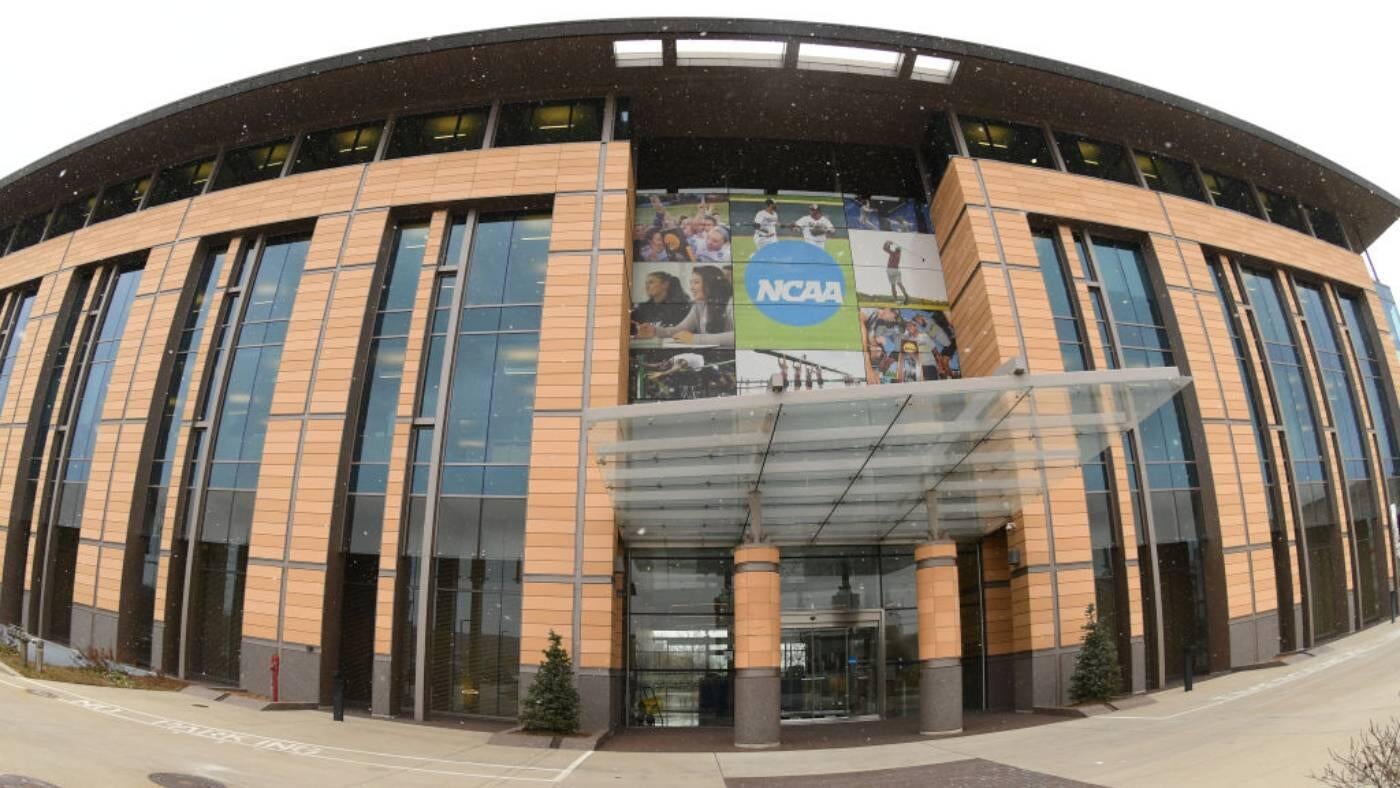
As part of the $2.8 billion settlement, beginning July 1, schools will have $20.5 million in payments to divvy out across their men’s and women’s athletic programs.
Should the suggested back-payment formula be used, 90% of the fund will be allocated to football and men’s basketball. Women’s basketball would receive 5% of the pool and all other sports, including softball, would spilt the remaining 5%.
Between the Wild West-era of NIL and the increasing transfer portal traffic, college rosters are constantly changing. As more money comes into sports like softball, coaches must strike a balance between cultivating young athletes and leaders with recruiting superstars who can accelerate the championship window.
What is that balance?
“That’s the great unknown right now,” Texas coach Mike White told CBS Sports Friday night. “Like the athletic director [Chris] Del Conte said, it’s, like, coming up, sailing out in a flat world and coming off the edge … In some respects, it’s great that these athletes are able to kind of earn a living now, or get paid for what they do, and that’s awesome. But it’s also hard to compete.”
Even while competing in his eighth WCWS championship, White and his staff had eyes on the transfer portal, because that’s what is required to compete in 2025. Austin may have the title, but there’s no denying that there’s also a good deal of momentum some 375 miles away in Lubbock.
All signs point to the rising senior returning to Texas Tech. The question now is whether Canady and Glasco can build on The NiJa Effect?
NIL
With $2.7 billion settlement, college sports’ big money era is officially here : NPR
Starting this fall, NCAA Division I schools will be able to pay players directly up to a salary cap of $20.5 million. Jae C. Hong/AP hide caption toggle caption Jae C. Hong/AP A federal judge has approved the multibillion-dollar class-action legal settlement known as House v. NCAA, paving the way for a new era for […]
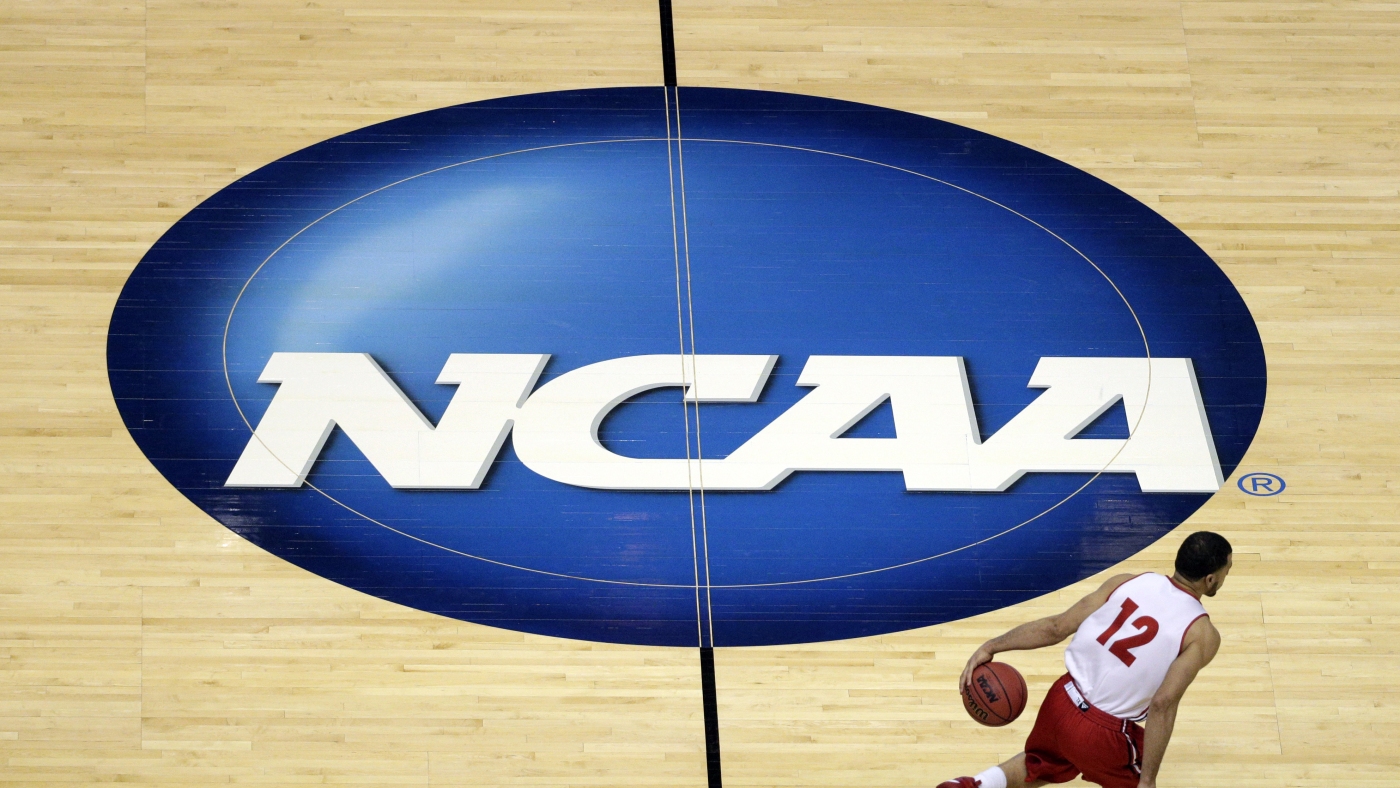

Starting this fall, NCAA Division I schools will be able to pay players directly up to a salary cap of $20.5 million.
Jae C. Hong/AP
hide caption
toggle caption
Jae C. Hong/AP
A federal judge has approved the multibillion-dollar class-action legal settlement known as House v. NCAA, paving the way for a new era for college sports.
Starting this fall, colleges and universities in the NCAA’s top division will be allowed to directly pay athletes for the first time. Payments will be limited by a salary cap set initially at $20.5 million per school. And more than $2 billion will be paid out to former college athletes who were not allowed to earn money while they were in school.
“Despite some compromises, the settlement agreement nevertheless will result in extraordinary relief for members of the settlement classes,” U.S. District Judge Claudia Wilken wrote in Friday’s order.
The approval of the settlement “marks a huge step forward for college sports,” said NCAA President Charlie Baker. Direct payments to players, he added, “is a tremendously positive change and one that was long overdue.”
Origins of the settlement
For decades, college athletics were ruled by the tradition of amateurism, and NCAA rules banned schools from compensating players — called “student-athletes” by the NCAA — with anything beyond a scholarship that covered the costs of tuition and attending college.


But the money in big-time college sports has grown exponentially over the past few decades. Top-level athletic departments rake in hundreds of millions of dollars from broadcast deals, ticket sales, donations and licensing agreements.
“The money became too big to not allow athletes to get a cut,” said Noah Henderson, a one-time collegiate golfer who now directs the sports management program at Loyola University Chicago.
The House settlement arose out of three different lawsuits over the issue of compensation for collegiate athletes. The plaintiffs were a class of some 390,000 current and former college athletes, and the defendants were the NCAA and five of its athletic conferences. The negotiations took more than a year to complete.
How the settlement works
There are two major parts of the House settlement: one that looks backward, and one that looks forward.
Looking backward, the NCAA and schools have agreed to pay $2.75 billion to former college athletes who played before 2021. That’s the year the NCAA changed its rules to allow players to sign licensing agreements to earn money from their name, image and likeness rights, known as NIL. Men’s football and basketball players will earn the largest payments, with prominent athletes who played at major schools earning as much as five or six figures.

Going forward, the settlement puts in place a new system that will allow schools to pay players directly. Schools will be able to decide which players to pay and how much to pay them. It is expected that most of the compensation will be reserved for players in the sports that generate the most revenue for schools: primarily football, along with men’s and women’s basketball.
The settlement also sets a salary cap. For each school, player compensation across all sports will count against a cap initially set at $20.5 million and that could rise as high as $33 million in 2035. Also new are roster limits, which replace the traditional scholarship limits for each sport. Schools may grant as many scholarships as they like, but team sizes are limited.
Around half of the NCAA’s 365 Division I schools are expected to adopt the new framework, either because their conferences — the SEC, ACC, Big Ten, Big 12 and PAC-12 — are named as defendants and they are required to comply with the settlement or because they are expected to opt in to its terms, according to court documents filed by lawyers negotiating the settlement. Some schools, particularly those in the lower football subdivision and those without football teams altogether, will opt out of the settlement and continue to compensate athletes only with scholarships and other costs of attendance.
Name, image and likeness
Since 2021, when the NCAA first allowed players to earn compensation from their name, image and likeness rights, NIL payments have become a de facto pay-to-play system. Star players, like Duke’s basketball phenom Cooper Flagg, have earned millions of dollars on these deals.
Another key part of the settlement takes aim at those supersized NIL deals by establishing a third-party clearinghouse to review licensing agreements for “fair market value.”
That concept has been criticized by some in college sports. It is also likely to face legal challenges, said Sam Ehrlich, a professor at Boise State University who tracks college sports litigation.
“There’s going to be significant questions moving forward as to what kind of powers that clearinghouse has and whether the clearinghouse is even legal,” Ehrlich told NPR last month.
NIL
Colorado Buffaloes’ Julian Lewis Defines Separation Between NIL, Football
Colorado Buffaloes quarterback Julian “JuJu” Lewis is one of the more decorated high school recruits to come out of Georgia in recent memory, and Lewis seems to be taking advantage of his success and cashing in on Name, Image, and Likeness (NIL) deals. Lewis was originally a member of the recruiting class of 2026, but […]
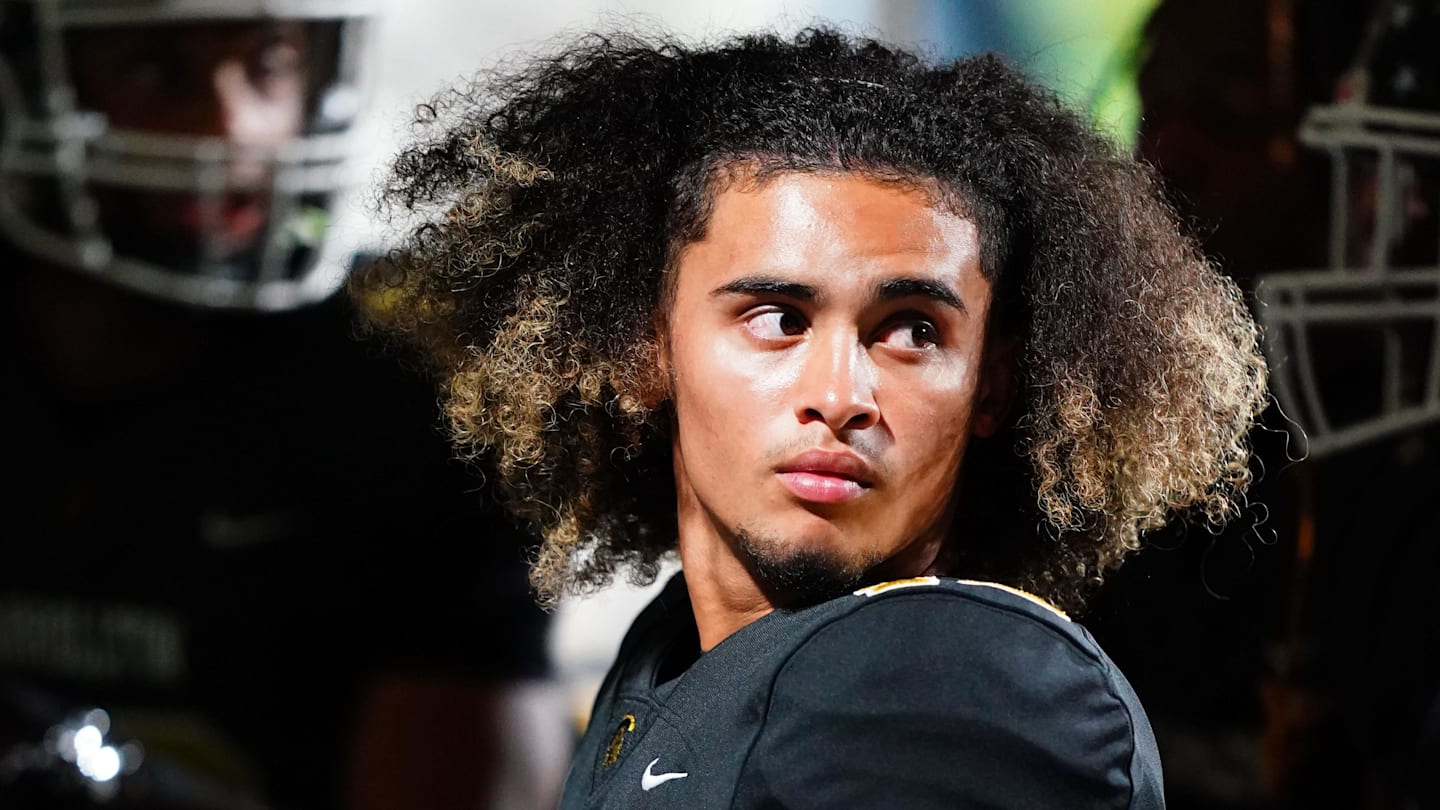
Colorado Buffaloes quarterback Julian “JuJu” Lewis is one of the more decorated high school recruits to come out of Georgia in recent memory, and Lewis seems to be taking advantage of his success and cashing in on Name, Image, and Likeness (NIL) deals.
Lewis was originally a member of the recruiting class of 2026, but he re-classified and graduated ahead of schedule so that he could enroll early in college. As a former four-star recruit, Lewis was committed to the USC Trojans and coach Lincoln Riley before eventually flipping his commitment to the Colorado Buffaloes and coach Deion Sanders.
Lewis was recently interviewed by USA Today’s Brent Schrotenboer as part of an NIL opportunity with Fanstake, a company that lets fans raise NIL funds for their favorite student-athletes on their favorite college teams.
“I’m blessed to be a part of this era in college and high school sports. There are thousands of great athletes who came before us who didn’t have the opportunities today. NIL has nothing to do with my college career; football and NIL are two very separate things,” Lewis said to Schrotenboer.
“Football is my priority. I have a responsibility to myself, my teammates, and my university to become the best player that I can be,” Lewis continued. “NIL is going well, I’m thankful for the opportunities that I have. My dad and my team have done a really good job creating opportunities for me.”
While the expectations are high surrounding Lewis in Colorado’s offense, he will have to compete with transfer quarterback Kaidon Salter to lead the Buffaloes in 2025. Regardless of his status as the starting or backup quarterback for Colorado, Lewis has one of the highest NIL valuations on the Buffaloes’ roster, according to On3.
MORE: Cleveland Browns Coach Addresses Shedeur Sanders’ Work Ethic At OTAs
MORE: Cleveland Browns Trade Kenny Pickett Before NFL Training Camp? Shedeur Sanders Rising
MORE: Cleveland Browns Quarterback Shedeur Sanders’ Stats From OTAs Released
Sitting behind only Colorado offensive tackle Jordan Seaton, Lewis has a $1.1 millon NIL valuation from On3.
Lewis revealed some of the advice he has received from his father regarding NIL and football:
“He’s always reminding me that I have two jobs: QB and entrepreneur,” Lewis told Shcrotenboer.
The advice has paid off, with Lewis becoming one of the more popular high school recruits for his class. Additionally, Lewis lands in a great spot to build his brand with Colorado. “Coach Prime,” with the help of Deion Sanders Jr. and Well Off Media’s social media presence, has given fans unprecedented access to the Buffaloes’ program, helping to grow the star power of former Colorado quarterback Shedeur Sanders and Heisman Trophy winner Travis Hunter.
Schrotenboer asked Lewis if NIL played a factor in his decision to flip his commitment from USC to Colorado, but Lewis clarified his goals:
“No it wasn’t. It really came down to where I wanted to live and the opportunity to follow Shedeur who everyone knew was leaving for the NFL,” Lewis answered.
NIL
Why College Basketball Programs Are Hiring GMs
Why College Basketball Programs Are Hiring GMs Privacy Manager Link 0

NIL
College sports settlement means NCAA schools can directly pay players
NCAA member schools can compensate their players across all sports beginning July 1, according to the approval issued by U.S. District Judge Claudia Wilken. Latest on NCAA settlement that would allow revenue sharing for college athletes USA TODAY Sports’ Steve Berkowitz discusses the latest on judge’s refusal to approve NCAA settlement that would allow revenue […]
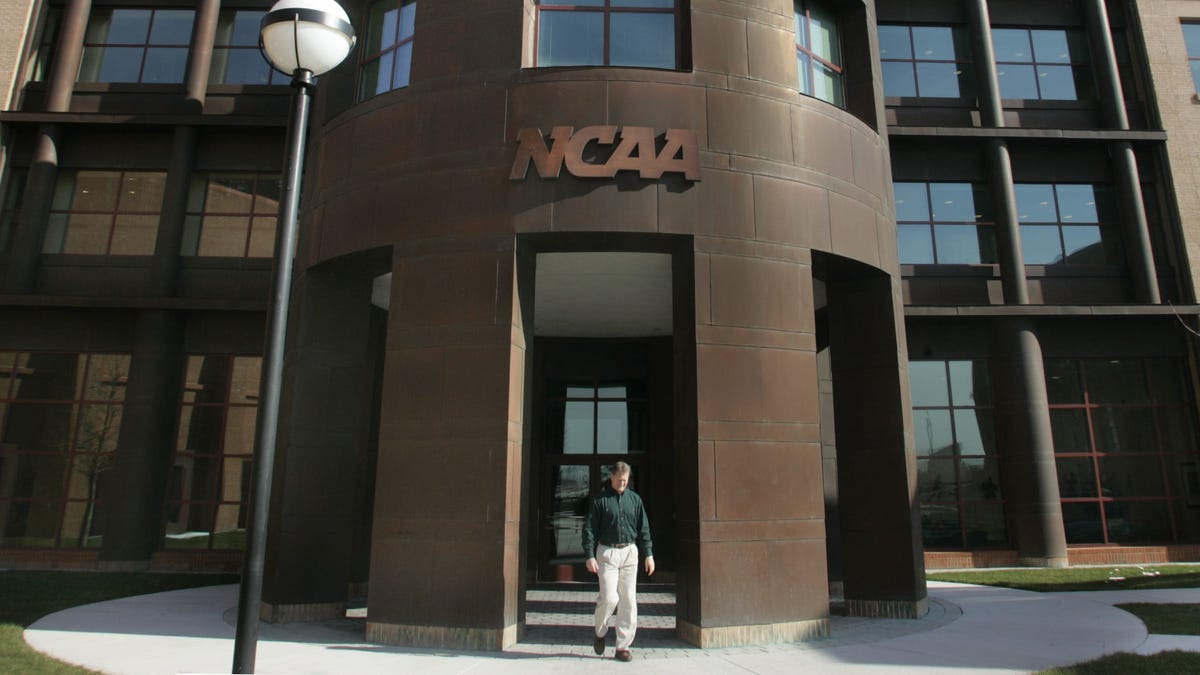
NCAA member schools can compensate their players across all sports beginning July 1, according to the approval issued by U.S. District Judge Claudia Wilken.
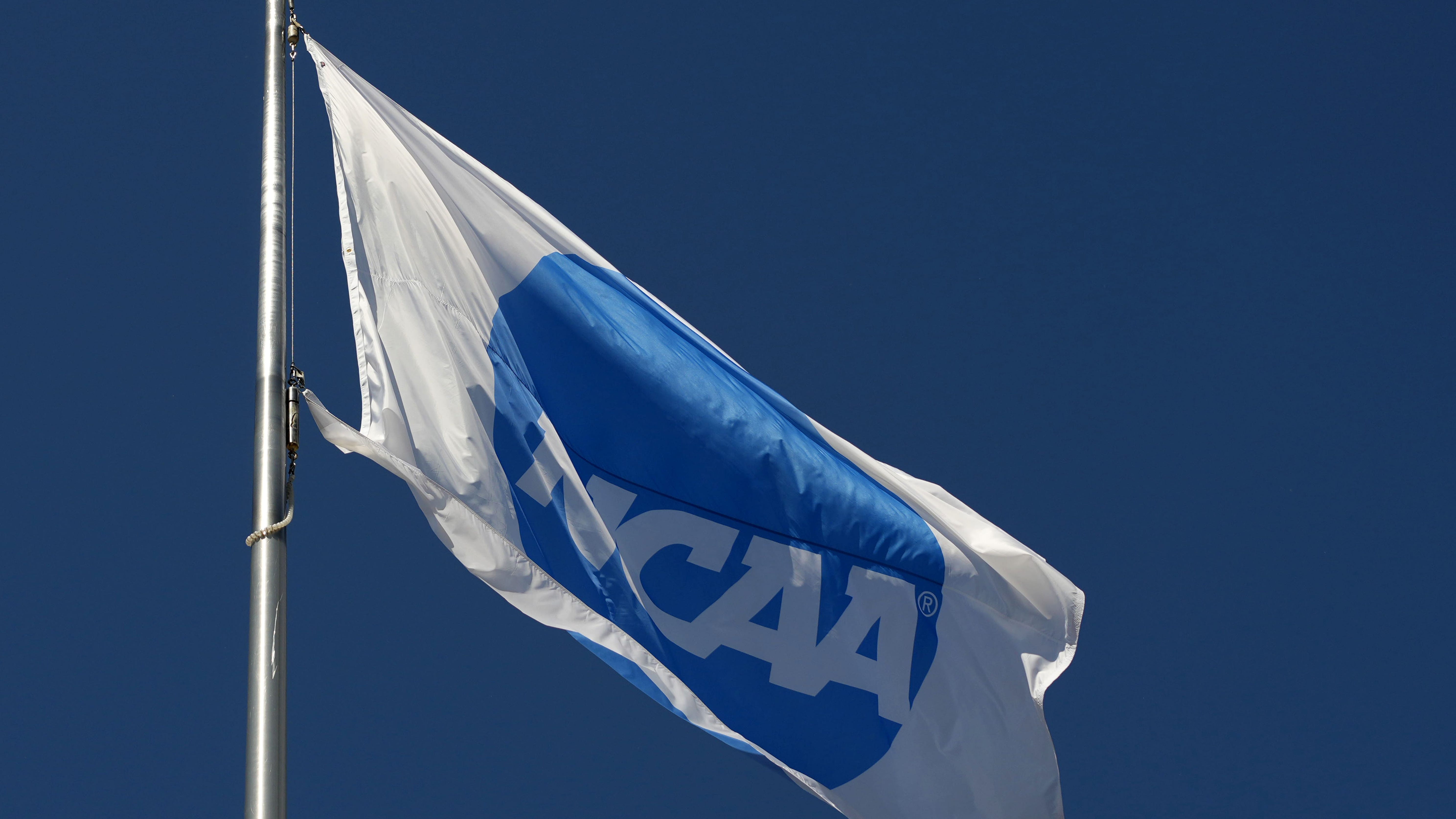
Latest on NCAA settlement that would allow revenue sharing for college athletes
USA TODAY Sports’ Steve Berkowitz discusses the latest on judge’s refusal to approve NCAA settlement that would allow revenue sharing for college athletes
Sports Pulse
- College athletes can now be compensated for their name, image, and likeness.
- The settlement covers athletes whose careers began between 2016 and Sept. 15, 2024.
A federal judge has granted final approval of a settlement of three antitrust cases addressing the compensation of college athletes Friday, ending a protracted legal debate and ushering in an extraordinary era that will allow NCAA member schools to directly pay their athletes.
According to the approval issued by U.S. District Judge Claudia Wilken in Oakland, California, schools will be able to compensate their athletes for the use of their name, image and likeness across all sports through an expected initial annual allotment of $20 million-$23 million per school, according to estimates. The changes are set to go into effect July 1.
The total allotment for NIL payments will be guided by a cap of 22% of the combined total of certain revenues of Power Five conference schools. The dollar amount is set to grow annually.
The agreement resolves lawsuits involving the NCAA, the Power Five conferences and lawyers for the plaintiffs by providing a 10-year settlement worth about $2.8 billion in damages, most of which is to be paid to compensate current and former athletes who were unable to participate in NIL contracts. Athletes whose college careers began between 2016 and Sept. 15, 2024, are eligible for compensation.
The damages money will come from the NCAA, which the largest share will come from the association’s central office via new revenue, cost savings and reserve funds. The remainder will come from reductions in NCAA distributions to Division I members, with roughly a quarter coming from members of the Power Five conferences.
During the process of the settlement approval, there were several objections to Wilken made in-person and in writing last month. It is expected there will be some of those objectors appealing her approval. An appeal must be made within 30 days of the decision.
-

 College Sports3 weeks ago
College Sports3 weeks agoPortal Update – Basketball and Gymnastics Take Hits
-

 College Sports3 weeks ago
College Sports3 weeks agoPortal Update – Basketball and Gymnastics Take Hits
-

 Professional Sports2 weeks ago
Professional Sports2 weeks agoJon Jones answers UFC retirement speculation as fans accuse champion of 'holding the belt …
-

 Health3 weeks ago
Health3 weeks agoBYU women's basketball guard injures ACL twice
-

 NIL2 weeks ago
NIL2 weeks ago2025 NCAA Softball Tournament Bracket: Women’s College World Series bracket, schedule set
-

 Youtube2 weeks ago
Youtube2 weeks agoXavier Legette taught Marty Smith his signature celly
-

 High School Sports2 weeks ago
High School Sports2 weeks agoToday in the MHSAA
-

 College Sports3 weeks ago
College Sports3 weeks agoIU basketball recruiting
-

 Motorsports2 weeks ago
Motorsports2 weeks agoWhy IHOP Rode With Dale Earnhardt Jr. In Amazon NASCAR Debut
-

 College Sports3 weeks ago
College Sports3 weeks agoNCDC Commitment Profiles: Cyclones’ Martins Moving On to Saint Anselm College • USPHL



































